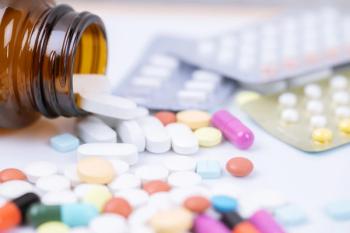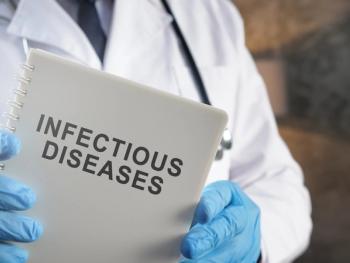
Can Post-Exposure Doxycycline Prevent Sexually Transmitted Infections?
A study examined STI rates following doxycycline post-exposure prophylaxis to see if it could reduce infection rates.
Researchers have found that post-exposure prophylaxis doxycycline (doxy-PEP) reduced the rates of gonorrhea, syphilis, and chlamydia by more than 65% when used within 72 hours after condomless sex.1 However, researchers also found a small increase in antimicrobial resistance, which they said needs further study.
The CDC reported that gonorrhea, syphilis, and chlamydia have been increasing yearly, with over 2.5 million cases reported in 2021.2 The National Institute of Allergy and Infectious Diseases (NIAID) acting director Hugh Auchincloss, MD, said in a news release that STI infection prevention is urgently needed, and that “this is an encouraging finding that could help reduce the number of sexually transmitted infections in populations most at-risk.”3
Anne F. Luetkemeyer, MD, of the Zuckerberg San Francisco General Hospital and Trauma Center and professor in the department of medicine at the University of California, San Francisco, and colleagues conducted the open-label, randomized study. Participants were recruited at 2 sexual health clinics and 2 HIV clinics in Seattle and San Francisco. Researchers recruited 501 men who have sex with men (MSM) and transgender women. Sixty-seven percent of study participants were White, 30% were Hispanic or Latino, 11% were Asian or Pacific Islander, and 7% were Black.1 Participants were assigned male sex at birth, were 18 years or older, and reported having sex with another man in the previous year. They were either planning on taking HIV preexposure prophylaxis (PrEP) or had been diagnosed with HIV, and had a gonorrhea, early syphilis, or chlamydia diagnosis the year prior to the study.1
Participants were randomly assigned to 2 groups: those who received doxy-PEP, an antibiotic in the tetracycline family, or those who received standard care. Individuals in the doxy-PEP group were instructed to take a single delayed-release 200 mg tablet of broad-spectrum doxycycline.1 It was recommended to take the tablet within 24 hours after engaging in condomless sex, but no later than 72 hours. The study authors assessed the participants' adherence to the medication regimen and any side effects every 3 months. Additionally, the participants were tested for STIs. Medication use was evaluated during clinic visits at 6 and 12 months. An independent board reviewed the data every 6 months to ensure study progress and safety. STI testing was conducted quarterly to track the incidence of STIs throughout the follow-up period.
In the doxy-PEP cohort, among participants taking HIV PrEP, researchers said at least 1 or more STIs were diagnosed in 10.7% of quarterly clinic visits.1 The standard care group had 31.9% of visits result in the diagnosis of 1 or more STIs.1 Among study participants living with HIV, the doxy-PEP cohort had a rate of 11.8% of quarterly visits with 1 or more STIs, while researchers reported the standard care cohort had 30.5%.
Researchers noted that the most commonly diagnosed STI in the study was gonorrhea. They said participants demonstrated good adherence to the medication regimen, with 86.2% reporting consistent use of doxy-PEP within 72 hours after condomless sex, and 71.3% reporting never missing a dose.1 No issues related to the safety or acceptability of the medication were identified.
Researchers discovered that in the cohort using doxy-PEP, a higher percentage of new gonorrhea strains showed resistance to tetracycline compared to the standard care group (38.5% versus 12.5%). The study authors said this suggests that doxy-PEP may not be as effective in protecting against gonorrhea strains that are already resistant to tetracycline. Researchers said further surveillance is needed to monitor this antimicrobial resistance.
The study authors also found that doxy-PEP reduced the presence of Staphylococcus aureus by 50% after 1 year. However, among those who still had S. aureus on their skin after 12 months, a slightly higher percentage of those in the doxy-PEP group showed resistance to doxycycline (16% versus 8%).1 Researchers said this is important because doxycycline is commonly used to treat skin and soft tissue infections caused by methicillin-resistant Staphylococcus aureus (MRSA).
Study authors said more research and longer follow-up is needed to clarify the effects of intermittent doxy-PEP use on antimicrobial resistance. It is also important to review doxy-PEP use in populations disproportionately affected by STIs, such as women with HIV and those taking HIV PrEP.
“Given its demonstrated efficacy in several trials, doxy-PEP should be considered as part of a sexual health package for men who have sex with men and transwomen if they have an increased risk of STIs,” Luetkemeyer said in a National Institutes of Health news release.3 “It will be important to monitor the impact of doxy-PEP on antimicrobial resistance patterns over time and weigh this against the demonstrated benefit of reduced STIs and associated decreased antibiotic use for STI treatment in men at elevated risk for recurrent STIs.”3
References
1. Luetkemeyer AF, Donnell D, Dombrowski JC, et al. Postexposure doxycycline to prevent bacterial sexually transmitted infections. N Engl J Med. 2023;388(14):1296-1306. doi:10.1056/NEJMoa2211934
2. Centers for Disease Control and Prevention. US STI epidemic showed no signs of slowing in 2021. News Release. April 11, 2023. Accessed June 20, 2023. https://www.cdc.gov/nchhstp/newsroom/2023/2021-STD-surveillance-report.html
3. National Institutes of Health. NIH-funded study finds doxycycline reduces sexually transmitted infections by two-thirds. News Release. April 6, 2023. Accessed June 20, 2023. https://www.nih.gov/news-events/news-releases/nih-funded-study-finds-doxycycline-reduces-sexually-transmitted-infections-two-thirds
Newsletter
Pharmacy practice is always changing. Stay ahead of the curve with the Drug Topics newsletter and get the latest drug information, industry trends, and patient care tips.

















































































































